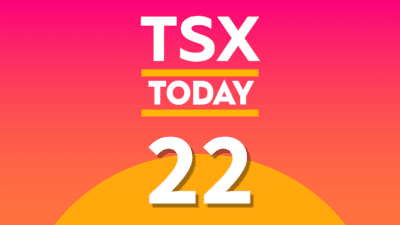My top stock for October was Fortis (TSX:FTS)(NYSE:FTS), a St. John’s-based utility. At the time, my reasoning was that building economic headwinds could create a turbulent environment for investors, and in that situation a stable dividend beast like Fortis was a good option.
Fortis stock has climbed 3.5% month over month as of close on October 25. The S&P/TSX Composite Index has dropped over 7% over that same stretch, with many key sectors experiencing sharp declines. In truth, Fortis was my target before the news hit that Canada had come to terms with the United States on a trade deal that would maintain a trilateral agreement on the North American continent. The easing of trade tensions produced some optimism in early October, but this has been squashed by the global stock market sell-off.
Those betting on gold equities will have also been rewarded in October. Barrick Gold (TSX:ABX)(NYSE:ABX), a Toronto-based miner and the world’s largest gold producer, has seen its stock jump 13% month over month as of close on October 25. The spot price of gold reached above the $1,240 mark for the first time since the summer. However, the U.S. Federal Reserve has maintained that it will continue to push for rate hikes into next year, which should keep downward pressure on the yellow metal in the near term.
Canadian bank stocks have taken a beating in October. BMO Covered Call Canadian Banks ETF (TSX:ZWB) had dropped 7.6% over a one-month span as of close on October 25. Canadian bank earnings have remained strong in 2018, and higher interest rates have served to improve margins across the board.
Royal Bank of Canada (TSX:RY)(NYSE:RY) stock had plunged 9.3% month over month as of close on October 27. The bank is a suitable target for investors looking to buy into this broad dip. Royal Bank is set to release its fourth-quarter and full-year results for 2018 in late November.
The Bank of Canada elected to raise its own benchmark rate by 0.25% on October 24, moving the rate to 1.75%. Royal Bank and several of its peers responded by increasing prime lending rates to 3.95% from the original 3.70%. In the third quarter, Royal Bank reported net income of $1.51 billion, which was up 8% from Q3 2017. This reflected improved deposit spreads, which were a direct result of higher Canadian interest rates. The bank also benefited from average volume growth of 5% in the quarter.
This next rate hike should serve to improve margins for Canada’s top lenders, but the central bank may have to tread carefully in 2019. An Ipsos survey released before the October 24th rate hike revealed that higher interest rates were negatively impacting the budgets of 45% of respondents, while 52% said they were worried about meeting their debt payments.
The rate-tightening environment has also eaten into mortgage growth, which is starting to impact credit growth among Canadian banks. These developments will impact the decision-making of policymakers going forward, but in the near term Royal Bank looks like an attractive stock to add after one of the most turbulent months on the TSX in years.







